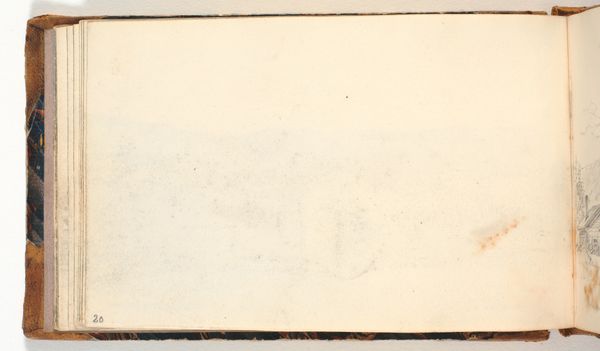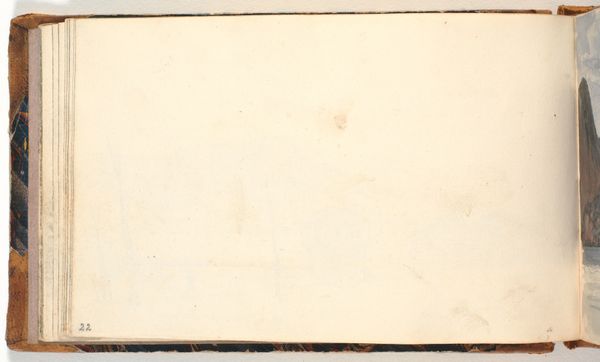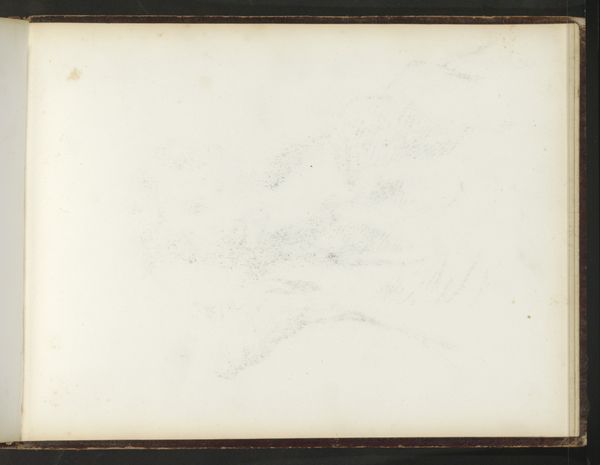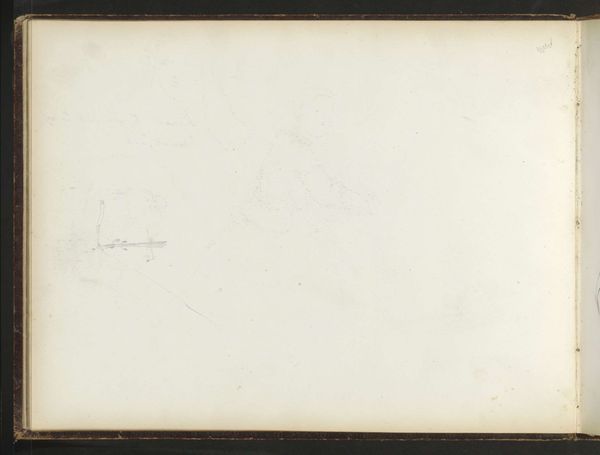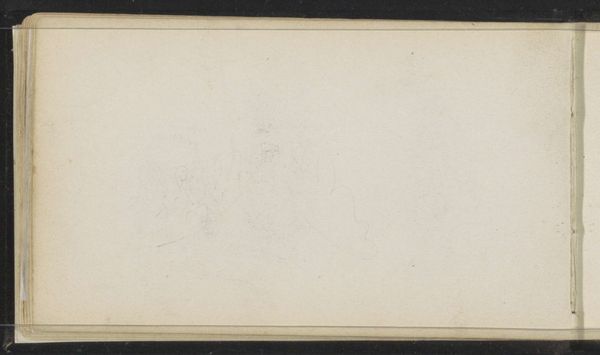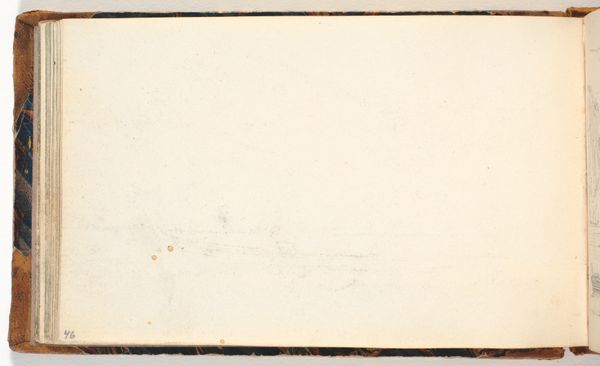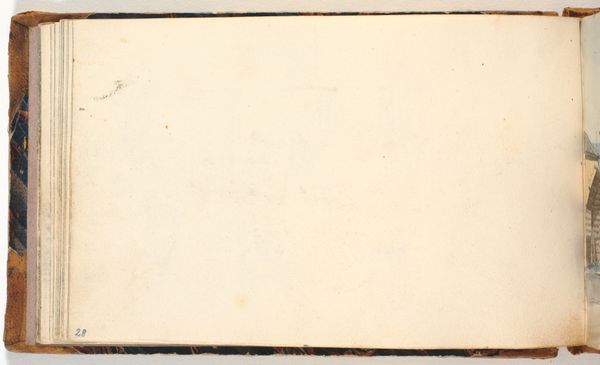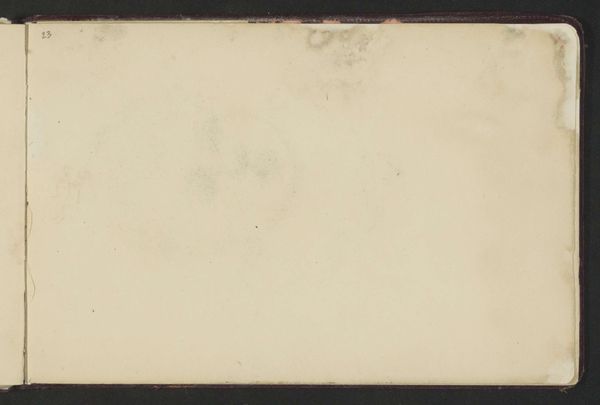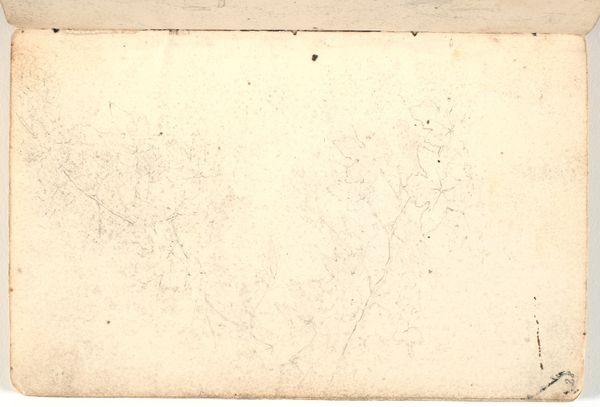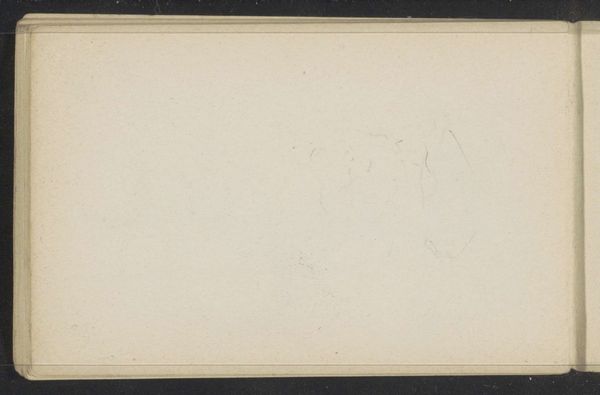
drawing, paper, pencil
#
drawing
#
landscape
#
paper
#
romanticism
#
pencil
Dimensions: 108 mm (height) x 177 mm (width) (bladmaal)
Curator: Let’s take a look at "Rids af buskads(?)" a pencil drawing on paper created by P.C. Skovgaard in 1849. What's your first impression? Editor: Stark and solitary. A very subtle texture sits atop what feels like vast blank space; like a lone idea amidst emptiness. The contrast between the scribble and the untouched paper really strikes me. Curator: Agreed. Considering the context of its creation, during the Danish Golden Age of painting, we should really focus on its materiality. Skovgaard probably created this outdoors using very simple portable means. Just paper, pencil, a place to sit... This highlights his intimate interaction with the landscape. Editor: But that scribble is so potent! It evokes a very particular, almost primordial scene. It looks like some gathering, perhaps spectral, or maybe ancient mythical beings huddle within that concentrated thicket. What do you make of the way the foliage obscures the potential meaning? Curator: Hmm. For me the question isn’t what it means symbolically, but what it represents about Skovgaard's process. He likely was walking through the Danish countryside. Think about the economic factors influencing his access to those resources – land ownership, transportation infrastructure, the manufacturing and distribution of pencils and paper... these all shaped his encounter. Editor: Perhaps. But, beyond the artist's physical circumstances, don't you feel the echo of older, pagan associations between the natural world and hidden knowledge? It gives off this aura of the Romantics' obsession with the wild, the untamed, the unexplainable... something beyond pure physical location. Curator: Of course, he was working during the height of Romanticism! But that was a historical mode. He still needed access to those art supplies, those sketching tours. And how that drawing was later distributed speaks to his professional relationships, collectors, the art market, how knowledge about the Danish landscape was being constructed through material means. Editor: And perhaps constructed with a good deal of symbolic baggage about what it means to be Danish, its relation to nature… Fascinating to see how much emotional and cultural expression can be wrung from what, on the surface, appears to be such a simple sketch. Curator: Exactly, considering that materiality is often a product of economic factors and individual choices – how these intersect to determine what we see is quite profound, I believe.
Comments
No comments
Be the first to comment and join the conversation on the ultimate creative platform.
